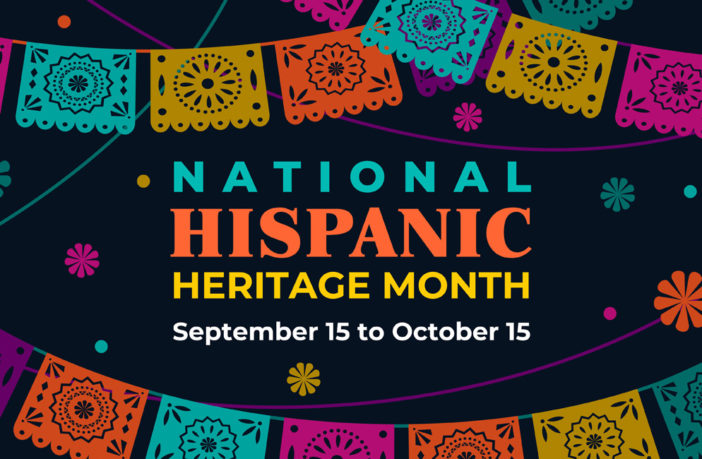Every year, from September 15th to October 15th, we celebrate Hispanic Heritage Month—a time where we come together to commemorate and learn about the culture, contributions, people and accomplishments of the Latinx and Hispanic communities.
But what many people might not know is that the month-long celebration is assigned a theme. The theme for this year’s Hispanic Heritage Month is “Latinos: Driving Prosperity, Power, and Progress in America,” which focuses on the political, economic and social growth of Hispanic communities in the United States.
So, what is Hispanic Heritage Month and how can we celebrate this year’s theme?
Here’s what you should know:
History
Hispanic Heritage Month started as a week-long celebration established by legislation sponsored by Rep. Edward R. Roybal of Los Angeles and was signed into law by President Lyndon Johnson in 1968. Exactly 20 years later, the commemorative week was expanded to a month (September 15 to October 15) by legislation sponsored by Rep. Esteban Edward Torres, amended by Senator Paul Simon, and signed into law by President Ronald Reagan. September 15 was chosen as the starting point for the commemoration because it is the anniversary of the Cry of Dolores, which marked the start of the Mexican War of Independence, and thus resulted in the independence of the New Spain Colony (now Mexico and the Central American nations of Guatemala, El Salvador, Costa Rica, Honduras and Nicaragua) which later became the Federal Republic of Central America.
The 30-day period also includes many dates of importance in the Hispanic community: Costa Rica, El Salvador, Guatemala, Honduras and Nicaragua celebrate their anniversary of independence on September 15; Mexico commemorates its independence on September 16; Chile commemorates its independence on September 18; and includes the celebration of Columbus Day or Día de la Raza.
The Theme
Prosperity, power, and progress. This theme aims to celebrate the ways in which the Hispanic and Latinx communities have increased their representation and belonging over the last several years. While there is always work to be done to further inclusion, there are several ways in which prosperity, power, and progress have grown in the last several years.
For example:
About 62.1 million Hispanic and Latinx people make up the overall population of the United States, making up 19% of the total population.The Hispanic population is the second largest minority group in the United States, with large portions of the community residing in California, Florida and Texas.Hispanic businesses make up a huge portion to the economy in the United States, especially when it comes to small businesses. Hispanic-owned businesses make up about 6% of all small businesses, over 347,000 businesses across the country.Hispanic businesses range in the products and services they provide, but contribute to the construction, food services and STEM industries in the largest numbers.The Latino and Hispanic communities are currently one of the least represented groups in main roles in television and film, with hopes for an increase in the upcoming few years.More Hispanic and Latinx congress members are present in Washington D.C. after the most recent midterm election than in any other time in history. Over 10% of the House of Representatives is made up of Latinx and Hispanic members.While representation in TV and film still remains low for Hispanics and Latinx, 2023 has showcased many Hispanic- and Latinx-starring shows, including The Mandalorian, The Last of Us, Blue Beetle, Spider-Man: Across the Spider-Verse, Lopez vs. Lopez and more.
What We Can Do
Even with these increases, it’s still important to continue elevating Hispanic and Latinx voices to further increase representation and inclusion in every aspect. Some of the best ways to do this are by:
Donating to organizations dedicated to furthering Hispanic and Latinx belonging.Streaming media, buying books and purchasing movie tickets for entertainment centered on and created by Hispanic and Latinx artists.Buying from Hispanic- and Latinx-owned businesses.Listen and support Hispanic- and Latinx-focused issues impacting the community.
Sources: United States Census, NBC, Pew Research Center, Wikipedia



